Armored cars of Sweden. Part I
Having some experience in the design of cars, Swedish companies in the early twenties began work on the creation of armored cars. Promising armored vehicles, unlike tanks, It was proposed to develop independently, and not to buy abroad in the form of design documentation or finished machines. In 1924-25, a group of Swedish military engineers visited several foreign enterprises, including the factory of the Czechoslovak company Skoda. Having visited foreign production, Swedish designers were able to get acquainted with the latest foreign ideas and take them into account.
Pansarbil m / 25 and m / 26
Among the Swedish delegates who visited Czechoslovakia’s factories was Captain Wilhelm Odelberg. Shortly after the end of the trip, the Swedish Defense Ministry formed a group of engineers headed by Odelberg. The task of the specialists was to study foreign experience and create their own project of an armored car. The Swedish industry had not previously engaged in such projects, but the Odelberg group compensated for the lack of experience with great enthusiasm.
The creation of documentation took months. Already at the end of 1925, the prototype Pansarbi m / 25 armored car was put to the test. The development of the armored car was carried out in close cooperation with the company Tidaholms Bruk AB, which affected the appearance of the finished vehicle. The armored car with a wheel formula 4х2 and a leading rear axle was made on the basis of the existing chassis, created by Tidaholms Bruk AB. The basic chassis of the one and a half truck was equipped with a hp 36 gasoline engine. and manual transmission. To increase the survivability in combat conditions, the chassis received new wheels with a tubeless tire made of hard rubber. Suspension remained the same, it used leaf springs.
The m / 25 armored vehicle hull was proposed to be assembled from sheets of 5 mm thickness. Like some foreign developments of the time, the new Swedish armored car had a characteristic location of armored vehicles. The side sheets were mounted vertically, frontal and stern - at an angle to the vertical. In the front sheet of the hood provided three horizontal cutout for radiator blowing. Engine maintenance was supposed to produce through two large hatches in the sides.
The internal volumes of the armored hull were divided into the engine and combat compartments. The latter occupied the entire middle and aft part of the car and accommodated the entire crew. The sides of the fighting compartment had two doors with viewing devices. It is noteworthy that the left door opened forward in the direction of travel, and the right - back. Thanks to this, the crew of the armored car, leaving the damaged car, could protect itself from fire from the front or rear direction using one of the doors.
To increase maneuverability in a combat situation, the m / 25 armored car received two command posts. The main one was placed in front of the combat compartment. The driver could observe the road through the open hatch in the front hull sheet, which in battle was covered with a viewing slot. Two more viewing slots were made in the sides of the hull. The second driver was located in the aft part of the fighting compartment, at the additional control post. The stern driver’s workplace had a reduced composition of equipment and less convenient means of observation: three slots.
A cylindrical tower of relatively large diameter was installed on the roof of the m / 25 armored car. In the roof of the tower there was a hatch for the evacuation of the shooter in case of impossibility to use the doors of the hull. The only thing they placed in the tower weapon armored car - a gun "Gochkiss" model 1900, caliber 6,5 mm. The dimensions of the tower allowed the use of the original weapon installation system. In the front surface of the tower there was a niche resembling a long-term embrasure of the firing point. According to some reports, this was done to increase the level of protection of the shooter from bullets and shrapnel.
The crew of the first Swedish armored car of its own design consisted of four people: two driver-mechanics, a commander and a gunner. The combat weight of the Pansarbil m / 25 machine did not exceed 6 tons.
By the end of 1925, Tidaholms Bruk AB built the first prototype of the new armored car. The prototype did not receive a reservation, its case was assembled from ordinary steel. This was done in order to save money, and also because of the unwillingness to complicate the construction of the machine, which is unlikely to be used outside the landfill. Such savings almost did not affect the test results. As can be seen from the well-known characteristics, the m / 25 armored car could hardly have high running or combat qualities.
Tests have shown that the first prototype armored car has a too weak engine. An experienced armored car m / 25 on the highway accelerated only to 45 kilometers per hour. Speed and maneuverability on rough terrain were unsatisfactory. In addition, only one machine gun could not provide sufficient firepower. According to the test results, it was decided to use the first prototype as a platform for running new solutions.
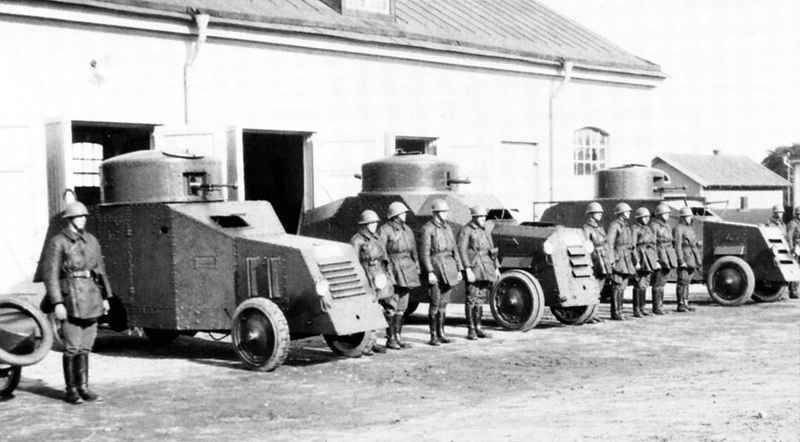
Soon after, a second car was built, in some sources referred to as m / 25-2. In general, the second armored car was similar to the first, but several innovations appeared in its design. The construction of the tower was changed (the weapons remained the same), the driver's frontal hatch, the engine louvers (instead of three slots, six were now provided with air). By order of the military, engineers under the direction of V. Odelberg and the company Tidaholms Bruk AB refined the chassis. In its composition, new tubeless tires with a pronounced tread, as well as several other elements that provide high throughput. For movement on snow-covered surfaces on the front axle placed mounting to install skis. The rear axle, in turn, could become the basis for the track unit, in which two additional rollers and a track were added to the armored car's wheel. The dimensions of the tracked propulsion force Swedish engineers to cut the armored body.
Tests of the second prototype did not reveal any advantages over the first. 35-strong gasoline engine was still not powerful enough for a noticeable increase in performance. At the same time, the snow kit improved mobility and maneuverability in the harsh Scandinavian winter.
In 1926, the third prototype of the armored car was built. Due to several serious innovations, he received a new designation - m / 26. The gain in cross-country ability when using skis and tracks was considered insufficient to complicate the design, due to which the armored car was deprived of the opportunity to use them. The general lines of the armored hull have changed, which has led to some complication of its assembly. The design of the driver’s hatch, engine grille and other hull elements has changed again. According to some sources, the m / 26 armored car received a petrol engine with an 45 horsepower. After upgrading the firepower of the armored car has grown significantly. Instead of a 6,5-mm machine gun in the turret installed a gun caliber 37 mm. Thanks to this, m / 26 could fight not only with manpower, but also with enemy armored vehicles.
All three armored car models m / 25 and m / 26 had a lot of flaws. Nevertheless, the military took them into operation for the accumulation of experience. The Swedish army used this technique for about ten years. It is known that in 1935, the first m / 25 was overhauled and modernized. Unfortunately, historians and lovers of military equipment, to our time did not live none of the first Swedish armored cars. Approximately in the mid-thirties, armored cars with expired resources were sent to storage, and in the beginning of the next decade they were cut into metal.
Landsverk L-170
In the late twenties, Landsverk joined the creation of armored vehicles. She already had some experience in the development of armored vehicles and therefore decided to master the related areas. In 1929, the development of the L-170 armored car began. According to the idea of the designers from Landsverk, the new armored car had to have a large combat mass in comparison with the machines of V. Odelberg, as well as carry more serious armor and reservations.
Such requirements have affected the choice of the base chassis. Not wanting to waste time on the creation of such units, Landsverk employees took the finished two-axle chassis of a Scania-Vabis truck. It was equipped with a 85 hp carburetor engine. and manual transmission with transmission of torque to the rear axle. For armored cars of that time, the wheel formula 4х2 was considered acceptable and L-170 was no exception. All wheels of the chassis, including dual rear ones, received new bullet-resistant tires. Suspension using leaf springs has not changed.
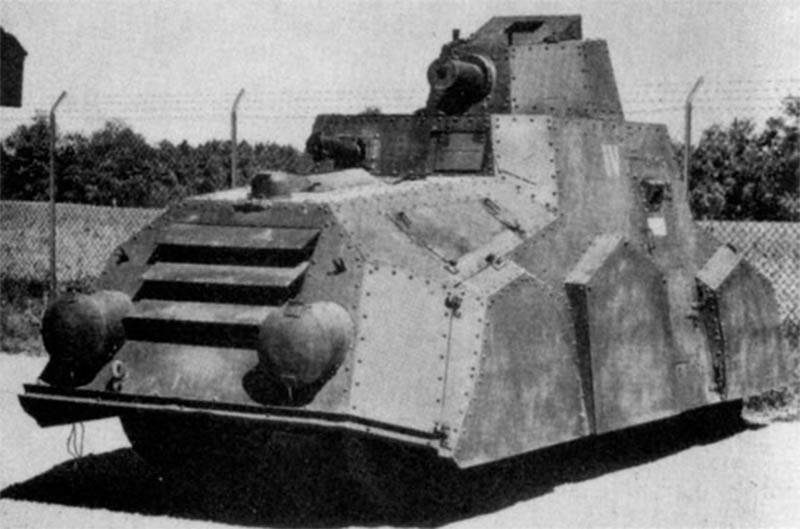
On top of the borrowed chassis was installed the original armored hull, assembled from sheets of thickness from 5 to 10 mm. When developing an armored hull, the authors of the project intended to protect all the main components of the vehicle, including the wheels. Because of this, the body was an armored "cap", worn on the chassis and completely closing it. This architecture of the case, however, affected its weight. To reduce the weight without loss in the protection of the side, the front and stern sheets had to be set at an angle to the vertical. In the armored hood were provided slots for cooling the radiator (front), as well as three hatches for engine maintenance. Two were located on the side surfaces of the hood, the third - on its top panel. A characteristic feature of the appearance of the L-170 armored car has become large armored headlights located in the lower part of the front and stern sheets.
In the middle part of the hull, behind the engine compartment, they placed a habitable volume with jobs for five crew members. In front of the fighting compartment, on the left side, was the control post and the driver's seat. The survey from his workplace was extremely limited: there was only a small hatch with a lid in the front hull sheet. To the right of the driver was located one of two shooters. He could attack targets with the X / NUMX-mm machine gun m / 8-14. The second shooter was in the turning turret with a machine gun of the same type. On the stern armor sheet of the fighting compartment, on the starboard side was an 29-mm rifled gun m / 37В, which was served by the gunner-gunner. Finally, the commander was part of the crew. Next to the gun in the armored car L-98 set the second driver's workplace. If necessary, he could move from one control station to another and take the car out of the fire in reverse. For landing and disembarking the crew in the sides of the armored car were made two doors with viewing slots. Another hatch was on the roof of the tower.
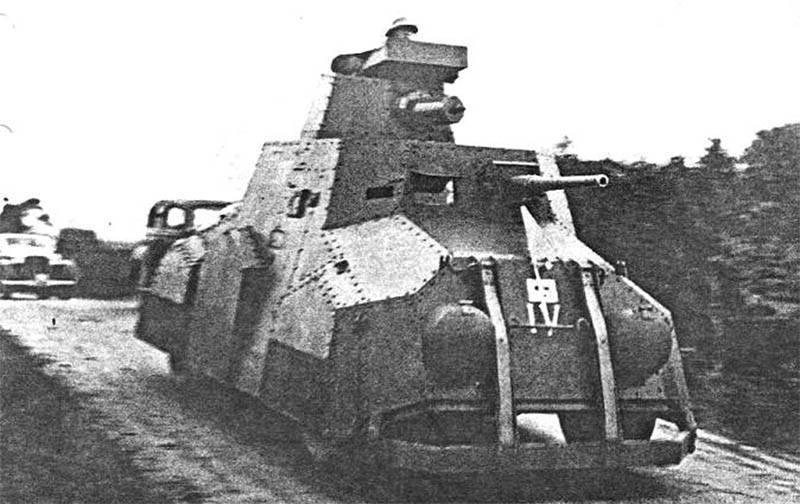
The combat weight of the L-170 armored car reached 11 tons. At the same time, the car turned out not too large: the length is about the 5,4 meter, the width is less than 2,5 m, the height is the 2,3 meter.
The trials that began in the 1930 year did not allow to reach an unambiguous conclusion about the prospects of the L-170 armored car. His armor was at the level of the best cars of this class. In terms of composition and power of weapons, it could even compete with medium tanks. However, the engine power 85 hp turned out to be weak for the 11-ton machine. The maximum speed on the highway did not exceed 60 km / h, and the gas tank with a volume of 95 liters provided a power reserve of no more than 100 kilometers. It was not possible to study the characteristics of the L-170 armored vehicle on rough terrain. Due to the low ground clearance (around 30 cm), due to the characteristics of the armored hull, the test vehicle tried to catch on the unevenness of the track and get stuck.
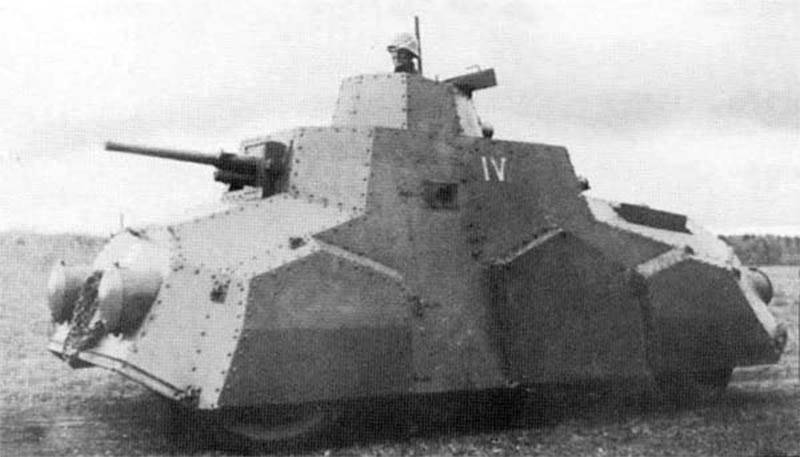
Some sources mention the second prototype of the Landsverk L-170 armored car, but there is no acceptable evidence of its existence. The only built L-170 armored car, despite all claims to mobility and maneuverability, was nevertheless adopted for service. In the 1932 year, at the end of the tests, he was transferred to the ground forces, where he received a new designation Pansarbil fm / 29. The operation of this machine continued until the mid-forties. Currently, the only L-170 stored in the tank museum of the city of Axvall.
Pansarbil fm / 31
A characteristic and unpleasant feature for the customer of the Landsverk L-170 project was the relatively low manufacturability of the armored hull and, as a result, the complexity and high cost of the entire vehicle. At the beginning of the thirties, Sweden had economic problems and could not afford to build a large series of expensive armored vehicles. For this reason, in 1931, when the prospects for the L-170 armored car became clear, Landsverk and Bofors received an order to create a simple and cheap armored car that was as unified as possible with the existing equipment.
Due to the requirements for the unification of the units, the order performers decided to retake the chassis of the commercial truck. This time, the choice fell on Volvo and Chevrolet trucks with a two-axle rear-wheel-drive chassis. The first prototype was built on the basis of the Chevrolet truck, and the serial armored cars called fm / 31 were built on the basis of those chassis that were available at the time of assembly. The base chassis was equipped with engines from 75 to 80 HP. and suspension based on leaf springs.
On the base chassis it was proposed to install an armored body of a simple design. Several sheets of 5,5 mm thickness were assembled into a single structure and were mounted instead of the driver’s cab and the base truck body. It should be noted that during the construction of fm / 31 serial armored cars, the design of armored corps underwent changes. The design of the reservation and its composition (various shields, covers, etc.) depended on the availability of certain components at the manufacturing plant. Thus, the Pansarbil fm / 31 armored vehicle can be considered a real ersatz armored car, which owes its existence to the difficult economic situation in the country.
A Chevrolet or Volvo truck, equipped with an armored hull, carried powerful enough weapons. In the cab, next to the driver was the shooter, armed with a machine gun m / 14-29 (on some machines used a different weapon). On the back platform of the armored car was set up a cabinet with a gun caliber 37 mm. According to some sources, part of the fm / 31 armored cars instead of a gun carried a pair of 8-mm machine guns. Obviously, the composition of weapons was determined based on the capabilities of the industry and the available stock of weapons.
In size, the Pansarbil fm / 31 armored cars hardly differed from the base trucks. They had a total length of more than 5-5,5 meters, a width of about 3 meters and a maximum height of up to 3-3,3 meters. The combat weight of these armored vehicles lay in the range from 4 to 4,5 tons. The crews of armored cars consisted of 5-6 people: driver, commander, gunner, loader, radio operator and one or two gunners.
The fm / 31 armored cars, which were armored trucks, had a lower level of protection compared to previous armored vehicles. However, the successful combination of combat weight and engine power provided a higher driving performance. On the highway, fm / 31 armored cars could reach speeds of up to 60-65 km / h, fuel was enough for 150 kilometers. Armored cars of the new model had limited cross-country maneuverability. However, in terms of similar characteristics, they outperformed the competitor in the form of L-170.
The combination of manufacturing complexity, price and ride quality determined the choice of the military. According to the results of the comparison of the L-170 and fm / 31 armored cars, the latter were put into service. In 1933-34, Landsverk built 30 armored vehicles for the new model. Armored cars fm / 31 for several years remained the most numerous equipment of this class in the armed forces of Sweden. They were actively used in various exercises, which is why a third of the machines produced a resource before 1940. In 1942, the remaining 19 armored vehicles were upgraded: instead of 37-mm guns, they installed Bofors guns of 20 mm caliber with twin machine guns. The operation of the fm / 31 machines ceased in the mid-forties.
On the materials of the sites:
http://www2.landskrona.se/
http://aviarmor.net/
http://sphf.se/
http://militaryfactory.com/
http://ointres.se/
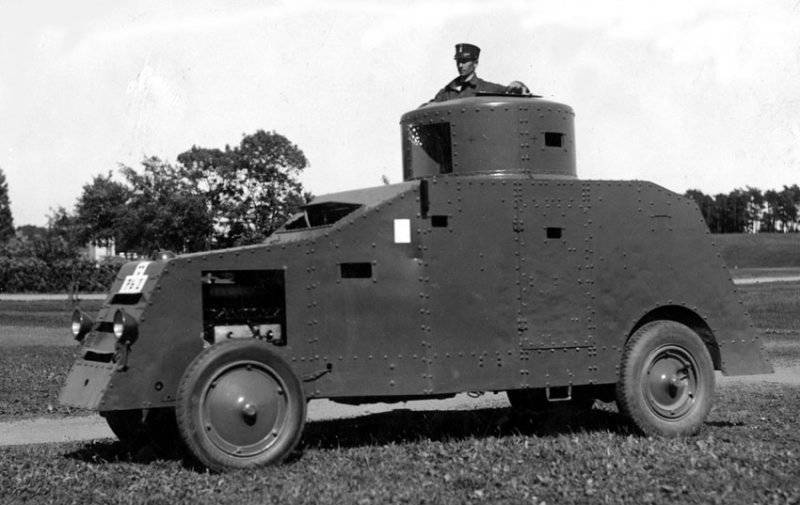
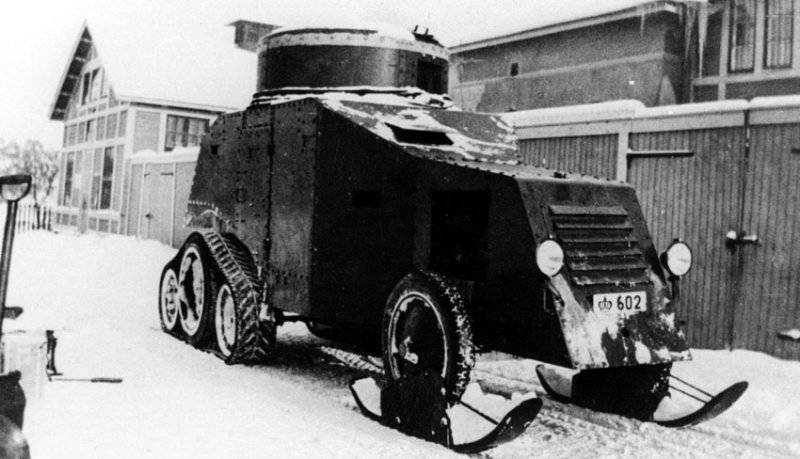
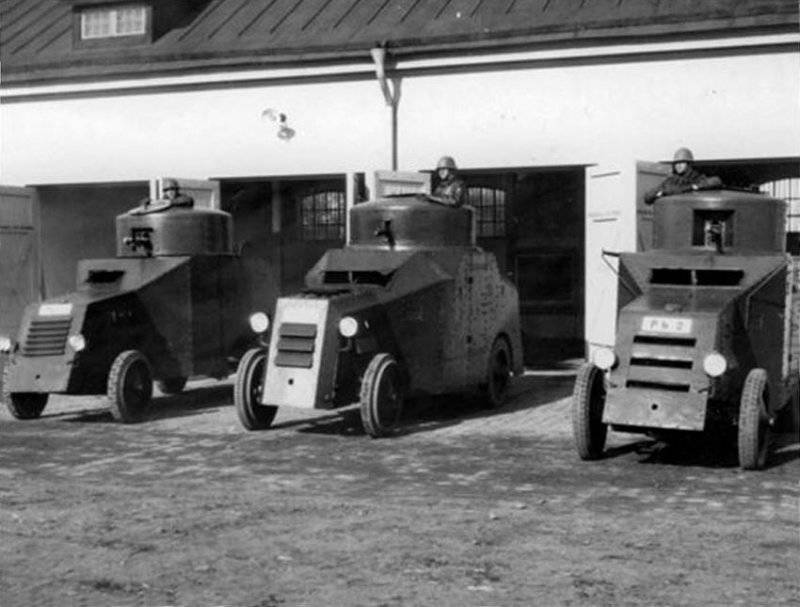
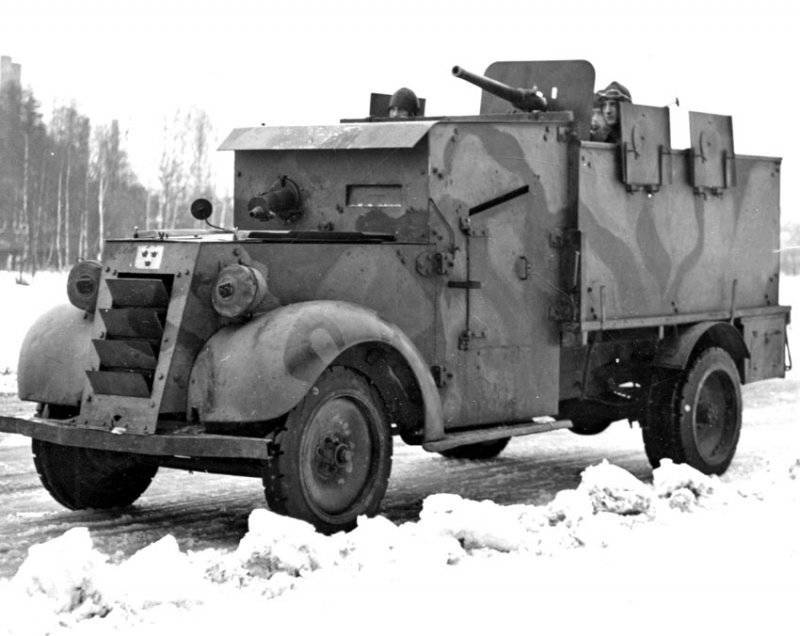
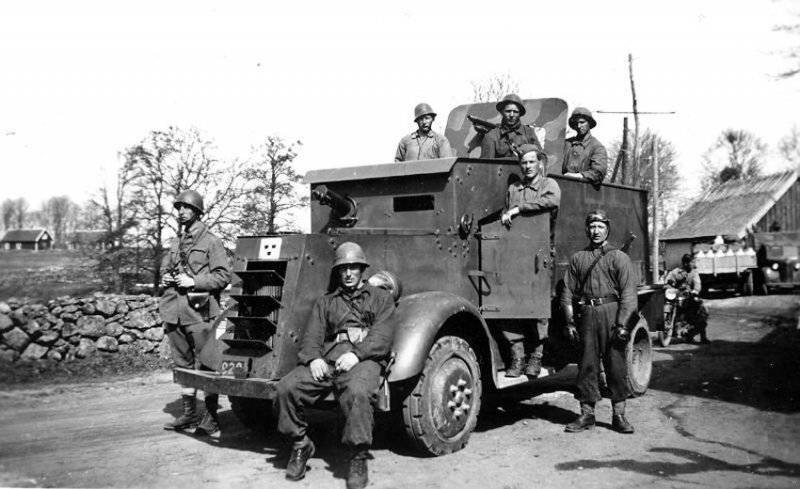
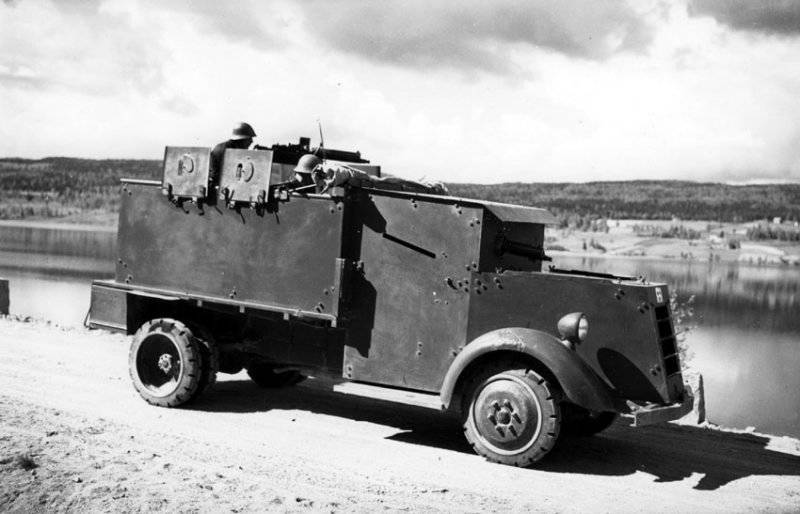
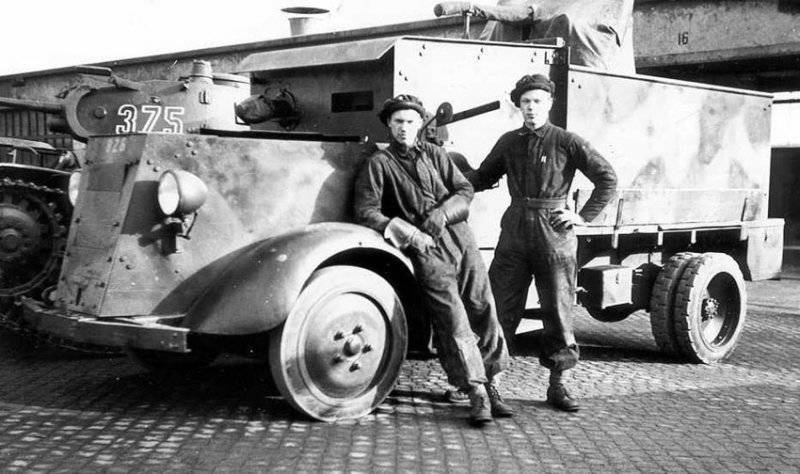

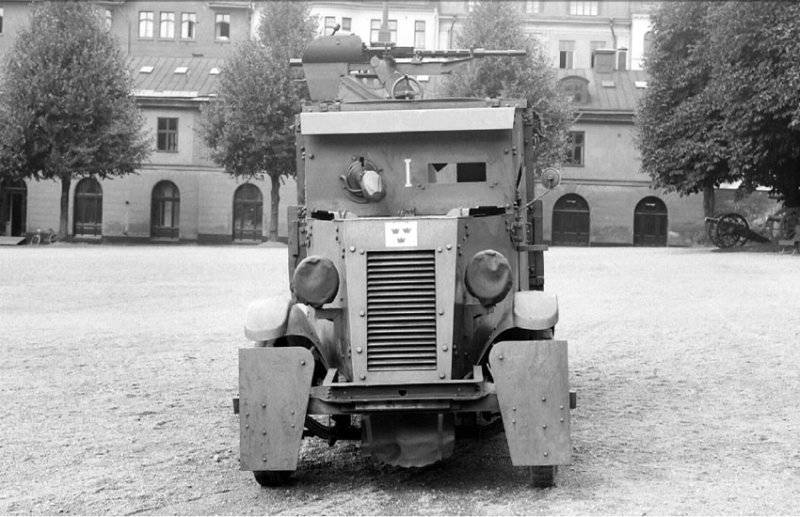
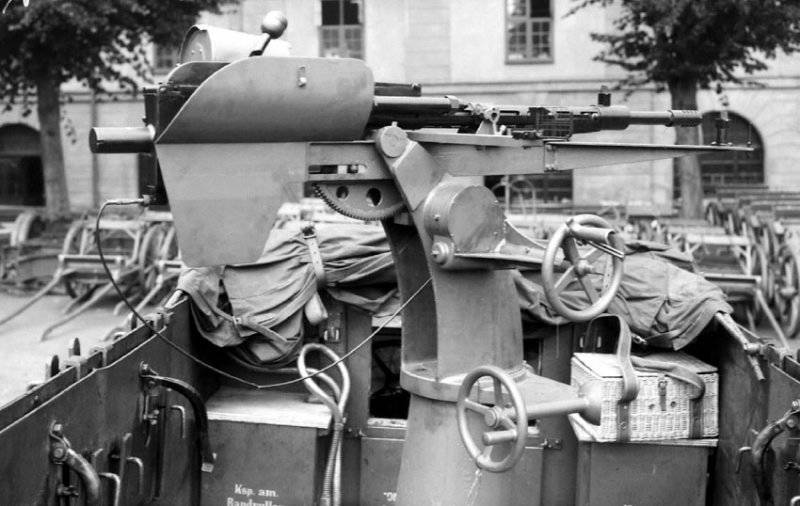

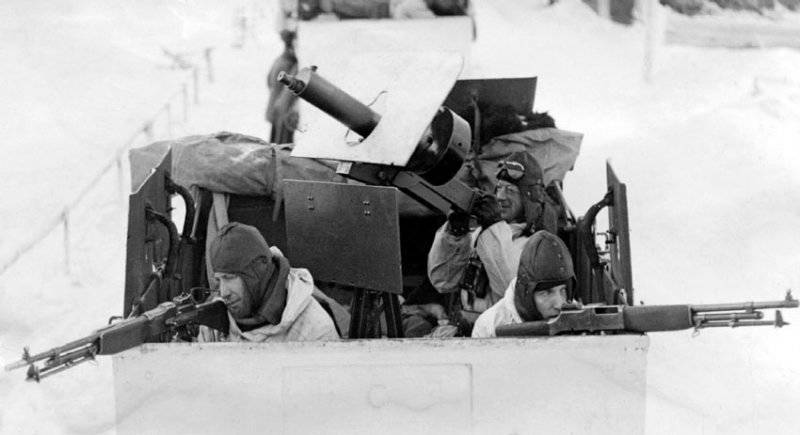
Information